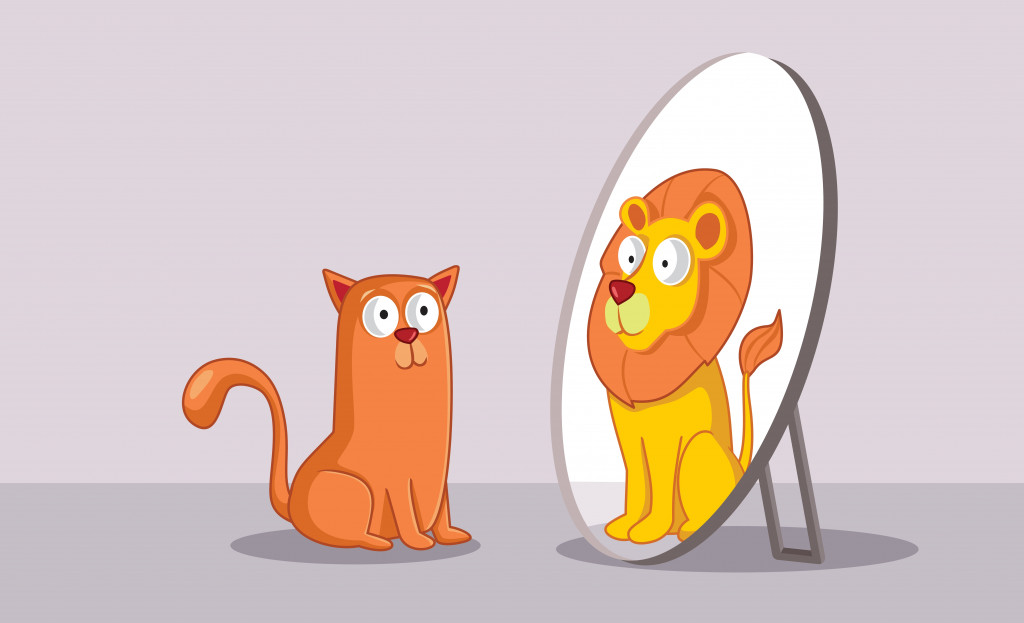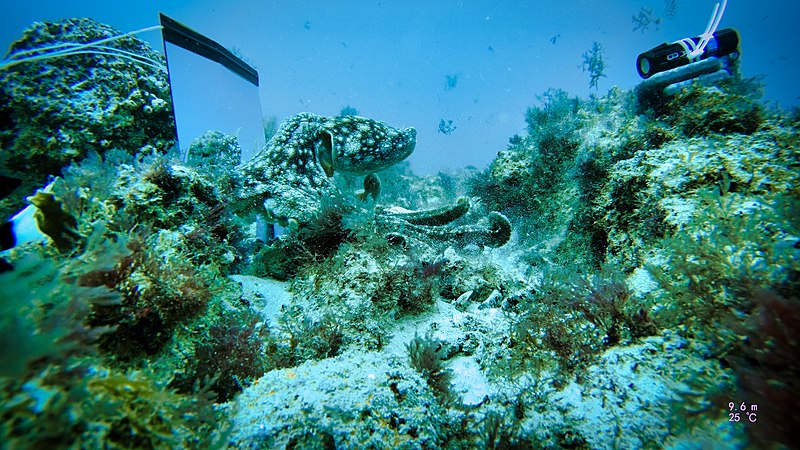Table of Contents (click to expand)
Humans look in the mirror and identify the reflection to be of themselves, but what happens when we place a mirror in front of other animals? How do they respond? Do they have the capacity for self-recognition?
If you’ve ever taken a baby to a mirror, you might have observed that the baby gets quite fascinated with the “stranger” in the mirror. They eventually recognize that the mirror image is of themselves. This is a psychological stage called the mirror stage, when young children start to understand that the person staring back at them in the mirror is their own reflection. Such a moment of recognition is considered a level-up in development.
Given that, what would be the case with animals? When animals look at their mirror reflections, do they see a stranger, an identical rival, or do they genuinely identify themselves?
Scientists have actually declared this self-recognition capacity as a form of intelligence, and this metric has been used as a tool to compare the cognitive abilities of animals!

Gallup And His Mirror Test
In 1970, an American psychologist named Gordon Gallup came up with the concept of mirror self-recognition or MSR (hence the name, the Gallup test). Gallup declared that self-recognition is a sign of self-awareness.
Self-awareness helps you understand and position yourself with respect to others, which in turn helps you frame and learn from experiences accordingly.
In the traditional MSR test, an animal is anesthetized and then marked with paint or a sticker on a part of its body that it can’t normally see. The animal is allowed access to a mirror once it has recovered from the sedation. If the animal touches or studies the mark, it is assumed that the test subject believes the reflection to be an image of itself, rather than that of another animal.
Mammals And The Mirror Test
We, Homo sapiens, pass the mirror test.
Evolutionarily, the ape and monkey families are closely related to humans, which makes them ideal first test candidates for the mirror tests.
Four chimpanzees were introduced to a mirror for a period of 10 days and their behaviors were observed. Initially, they started threatening the mirror images by blowing bubbles and making faces at them, but soon they started using the mirror for grooming—and even for picking their noses!
After 10 days, they were anesthetized and the mirror test was performed on them. The chimpanzees were able to recognize the new marks on them and analyzed them by touching them.
Next on the list are monkeys. In older studies, monkeys failed to perform well in the mirror test, but a 2015 study shows that they display self-recognition after undergoing some training.
Primates aren’t the only vainglorious animals. The highly intelligent dolphins, when exposed to reflective surfaces, used them to investigate marks on their body parts. A singular study found that horses also passed the test!

Also Read: What Makes Us Human And Separates Us From Animals?
When Non-mammals Joined The League
European magpies, a songbird from the crow family, also recognized the marks on their body when presented with a mirror. Contradictorily, azure-winged magpies did not act as smart as their relatives. This variation makes it difficult to be conclusive about the MSR ability of the bird group.
Among fish (a challenging group to test self-recognition on), a species of fish called cleaner wrasse (named so because it removes parasites from other fish) passed the MSR test.
There are also octopuses, the 8-armed, 9-brained geniuses, but they have failed this test, to the surprise of many.

Final “Reflections”
It is possible that some animals failed the test because the tests were not tailored to accommodate their evolutionary adaptations or visual spectrum. This supposition is based on the fact that the same groups of animals responded differently in different sets of experiments. Also, there are millions of organisms who have not yet seen a mirror, which makes it difficult to make generalized conclusions about animal groups.
Is it right to say that the mirror test is the final word in judging the intelligence of a species? Not so much. However, is the capacity for self-recognition an indicator of intelligence? Absolutely!
So, mirror mirror on the wall, am I the one who is doing it all?
Also Read: Can Animals Have A Third Eye?
How well do you understand the article above!

References (click to expand)
- GG Gallup Jr. The Mirror Test Gordon G. Gallup, Jr., James R. Anderson .... The University of Washington
- Toda, K., & Platt, M. L. (2015, January). Animal Cognition: Monkeys Pass the Mirror Test. Current Biology. Elsevier BV.
- Gallup, G. G., Jr. (1970, January 2). Chimpanzees: Self-Recognition. Science. American Association for the Advancement of Science (AAAS).
- Mather, J. (2021, August 12). Octopus Consciousness: The Role of Perceptual Richness. NeuroSci. MDPI AG.
- Nobus, D. (2018, March 28). Life and Death in the Glass: A New Look at the Mirror Stage. Key Concepts of Lacanian Psychoanalysis. Routledge.
- Baragli, P., Scopa, C., Maglieri, V., & Palagi, E. (2021, March 13). If horses had toes: demonstrating mirror self recognition at group level in Equus caballus. Animal Cognition. Springer Science and Business Media LLC.
- Prior, H., Schwarz, A., & Güntürkün, O. (2008, August 19). Mirror-Induced Behavior in the Magpie (Pica pica): Evidence of Self-Recognition. (F. de Waal, Ed.), PLoS Biology. Public Library of Science (PLoS).
- Wang, L., Luo, Y., Wang, H., Zou, Y., Yao, H., Ullah, S., & Li, Z. (2020, August). Azure-winged magpies fail to understand the principle of mirror imaging. Behavioural Processes. Elsevier BV.
- Kohda, M., Hotta, T., Takeyama, T., Awata, S., Tanaka, H., Asai, J.-. ya ., & Jordan, A. L. (2019, February 7). If a fish can pass the mark test, what are the implications for consciousness and self-awareness testing in animals?. (F. B. M. de Waal, Ed.), PLOS Biology. Public Library of Science (PLoS).
- Reiss, D., & Marino, L. (2001, May). Mirror self-recognition in the bottlenose dolphin: A case of cognitive convergence. Proceedings of the National Academy of Sciences. Proceedings of the National Academy of Sciences.
